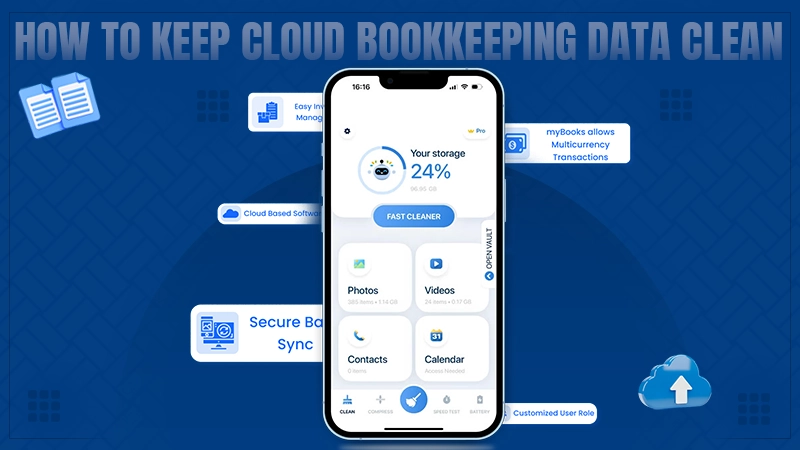Anything between 6 and 10 is considered a good AP turnover ratio, as a ratio below 6 indicates that the business is not generating enough cash to pay off its suppliers. A ratio above 10 shows that the business is not utilizing the cash rationally and is primarily spending it on paying short-term obligations.
Investing and selling goods to a company on credit is a risk-taking step for investors and suppliers. It was impracticable to determine how soon a company was going to repay the debt. Thus, various metrics are developed to identify this, like accounts payable turnover ratio, debt-to-asset ratio, asset-to-equity ratio, debt-to-capital ratio, etc. Out of these, AP Turnover Ratio is considered to be the most effective one.
It calculates the repaying ability of the business based on the most relevant components of debt, i.e., an average balance of accounts payable and net purchases from supplies. So, let’s see how to calculate it, its formulas, examples, and many more.
What is the Accounts Payable Turnover Ratio?

The accounts payable turnover ratio is a liquidity ratio that measures the rate at which a company repays its creditors with an extended trade line of credit.
It calculates how many times a company pays off its accounts payable during a particular period, revealing the credit-repaying efficiency of the company. All the accounting services measure the repayment efficiency of businesses with their AP turnover ratio. The higher the ratio, the better the repayment efficiency of a company.
Furthermore, the AP turnover ratio is also known as the payables turnover or the creditor’s turnover ratio. It is considered one of the best ratios to measure the trade credit repaying ability of a company. The AP ratio helps a company with its cost accounting, as it shows how much a company is earning to repay its short-term obligations.
Calculation of the Accounts Payable Turnover Ratio
The following is the formula to calculate the accounts payable turnover ratio:
Accounts Payable Turnover Ratio = TSP/((BAP + EAP)/2)
Where,
TSP = Total supply purchases during the period
BAP = Balance of accounts payable at the beginning
EAP = Balance of accounts payable at the end
In some cases, the COGS is considered net credit purchases from suppliers.
Cost of Goods Sold = Beginning inventory + Purchases during the period − Ending inventory
Example of Accounts Payable Turnover Ratio
Read the following examples to learn the computation process of the accounts payable turnover ratio:
1. XYZ Ltd. has a purchase credit of $1,00,000, from which creditors owed $10,000 were repaid. The opening and closing balances of the accounts payable account are $10,000 and $20,000, respectively.
Calculate the times the company repaid the creditors in a financial year.
Accounts Payable Turnover Ratio = TSP/((BAP + EAP)/2)
= $90,000 / $15,000 = 6
| Working notes 1. Net credit purchase = Credit purchases – Credit returned = $1,00,000 – $10,000 = $90,000 2. Average accounts payable balance = (BAP + EAP)/2 = ($10,000 + $20,000) / 2 = $30,000 / 2 = $15,000 |
2. ABC Company has made credit purchases of $50,000 from its vendors, out of which $5,000 was paid back. Accounts payable were $5,000 at the start of the year and $10,000 at the end of the year. The accounts payable turnover ratio will be.
Accounts Payable Turnover Ratio =TSP/((BAP + EAP)/2)
= $45,000 / $7,500 = 6
| Working notes 1. Net credit purchase = Credit purchases – Credit returned = $50,000 – $5,000 = $45,000 2. Average accounts payable balance = (BAP + EAP)/2 = ($5,000 + $10,000) / 2 = $15,000 / 2 = $7,500 |
What Does the Accounts Payable Turnover Ratio Signify?

The AP turnover ratio showcases how fast a company can repay the suppliers’ credit amount. It measures how many times per period a company makes payments to creditors.
Before investing and making credit sales, all vendors, and investors go through the accounts payable turnover ratio to check whether a company has enough revenue to cover its short-term liabilities or not. Depending on the ratio, you may have to invest in standard accounting to make sure your company can survive.
What’s DPO and How to Calculate It?

Days payable outstanding help organizations calculate the average number of days a company needs to pay its short-term liabilities. The calculation of DPO is very easy; you just have to divide the number of days in the period by the accounts payable turnover ratio.
Days Payable Outstanding = Number of days in a period / Average accounts payable balance of the period
The following are the most commonly used periods for calculating days payable outstanding:
1. One year = 365 days / Average AP Turnover Ratio
2. A Quarter = 90 days / Average AP Turnover Ratio
3. A month = 30 days / Average AP Turnover Ratio
Taking the AP turnover ratio examples into consideration,
Days payable outstanding = 365/6 = 60.83 (DPO of a year)
Days payable outstanding = 90/6 = 15 (DPO of a month)
Days payable outstanding = 30/6 = 5 (DPO of a month)
Relationship of AP Turnover Ratio With DPO
The AP turnover ratio is inversely related to days payable outstanding, which means a higher accounts payable turnover ratio will decrease the DPO.
Accounts Payable Turnover Ratio ∝ 1 / Days Payable Outstanding
For instance, if the AP turnover ratio were 7 instead of 6, the DPO would decrease to 52.14 days from 60.83 days.
The blow section will help you learn how you can make changes to your accounts payable turnover ratio.
How to Change Your AP Turnover Ratio?
After deeply comprehending the payable turnover ratio, we have come up with several ways to change a company’s AP ratio. But before that, let’s understand what a decreasing or increasing ratio indicates.
A decreasing AP ratio means that a company is taking a longer time to repay its vendors and suppliers, showcasing that the company is struggling to cover its financial obligations, leaving a negative image in front of investors.
At the same time, an increasing payable turnover ratio indicates that the company has enough funds to make business investments along with paying its suppliers and vendors.
Remember that a high AP turnover ratio over a long period means that the company is not using its cash rationally and is leveraging it to pay its suppliers rather than investing in business growth.
Hence, it is advised to keep the ratio of AP turnover high for no more than a year, as it could result in a lower growth rate for the company and lower earnings in the long term.
At the same time, a lower AP turnover ratio can also lead to investors denying investing in businesses due to a lower ratio. Therefore, we have come up with the following ways to help businesses increase their accounts payable turnover ratio for a short time:
- Effectively manage and improve the cash flow of the company.
- Increase sales revenue or sales turnover ratio.
- Resolve the accounts receivable quickly to pay suppliers and vendors.
- Pay bills and invoices before they are due.
- Use automated payment solutions.
- Collect cash from debtors to pay suppliers.
The following ways can help companies decrease their AP turnover ratio:
- Deny early payment discounts on invoices.
- Started delaying the payments after the due dates.
Remember that these are general ways to change the AP ratio and might not work for all businesses. Thus, it is preferred to go with expert accounts payable services because of the complex nature of the Accounts Payable Turnover Ratio computation. These will assist you in the calculation process and offer personalized recommendations for modifying your AP ratio.
While the accounts payable turnover ratio ensures that a company efficiently pays its employees, it’s equally important to manage incoming payments effectively. Thus, don’t neglect efficient accounts receivable services that can enhance cash flow and overall financial stability.
Tracking AP Turnover Ratio

Companies can use specific EPR (Enterprise Resource Planning) tools and accounts payable automation software to manage and track the status of the AP turnover ratio in real-time. These systems and software provide dashboard reporting and graphical representations of the trend line of the turnover ratio.
If the business can’t invest in these systems and software, dividing the total purchases by their average accounts payable balances can also help track the accounts payable turnover ratio. Most companies invest in outsourced accounting services to handle these things, but if your firm is unable to bear such expense, you should learn to calculate these things yourself, as it will make you better equipped to run your company.
Wrapping Up
The accounts payable turnover ratio is an indicator that determines the payoff time of the suppliers’ credit purchases after the due date. It is considered one of the best ratios to determine the trade credit repaying ability of a company, as it compares the cash-generating ability of a business to its short-term obligations. It is also used while computing the DPO (Days Payable Outstanding) of a company, showcasing an inverse relationship.
- What is the Accounts Payable Turnover Ratio?
- Calculation of the Accounts Payable Turnover Ratio
- Example of Accounts Payable Turnover Ratio
- What Does the Accounts Payable Turnover Ratio Signify?
- What’s DPO and How to Calculate It?
- Relationship of AP Turnover Ratio With DPO
- How to Change Your AP Turnover Ratio?
- Tracking AP Turnover Ratio
- Wrapping Up






